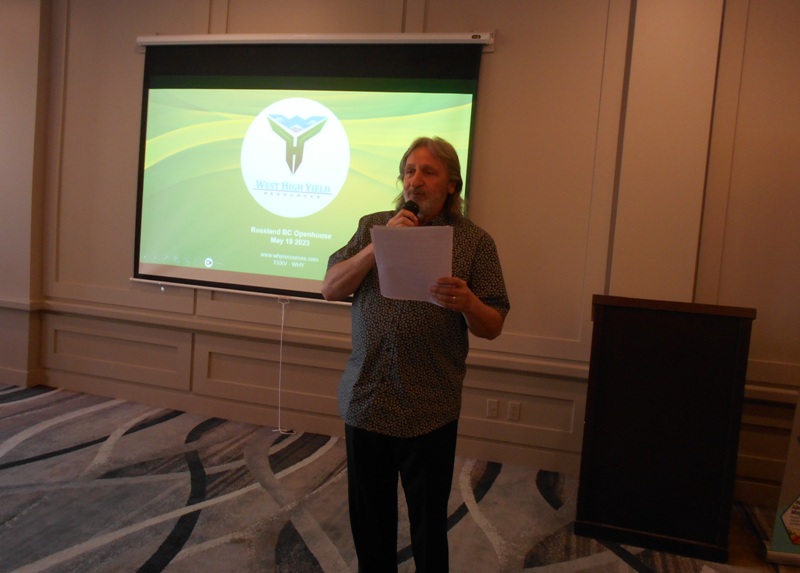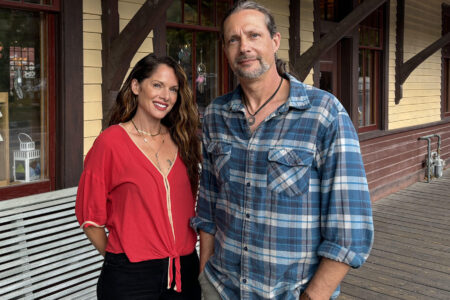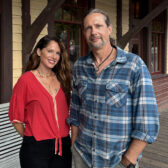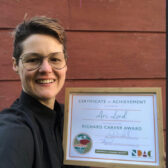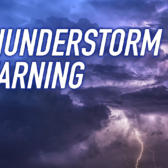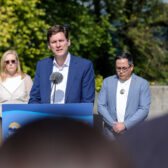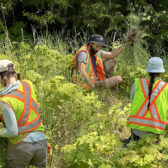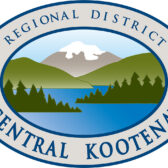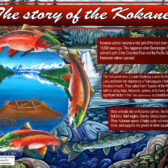Op/Ed: WHY Resources Open-pit Mine Proposal for Record Ridge
West High Yield (WHY) continues its efforts to further its application for a permit to go ahead with the next phase of its proposed magnesium mine on Record Ridge. The Ministry has accepted the WHY application for a permit, but has not approved it. The review process has just begun.
Local residents should be aware that voicing opinions and asking questions at the recent public meetings hosted by WHY will not affect the review process – to have an effect, your factual statements, opinions and questions must go to Ministry staff. There will be a 30-day Public Consultation Period when public input will be accepted, and that will be announced.
Katherine Wagar is the senior Ministry staff member working on the permit application. She will see public input that is submitted during the official Public Consultation, but has also indicated that she is willing to receive input before that begins. Her mailing address is:
Katherine Wagar, P.Ag
Regional Director, South East (Kootenay Boundary)
Ministry of Energy, Mines and Low Carbon Innovations
202 100 N Cranbrook Street
Cranbrook, BC
Email: [email protected]
We urge people submitting information and opinions to Wagar to ensure that your letters and messages are accurate, reasonably brief, and polite.
WHY public meetings
May 17 and 18 saw crowds of highly engaged Rosslanders attend the two “open house” meetings hosted by WHY at the Prestige Mountain Resort. Most of those attending were hostile to the concept of the mine and its anticipated effects, but there are a few supporters of the WHY proposal in Rossland – though they may be a percentage similar to the percentage of asbestos that WHY claims their ore body contains.
Katherine Wagar attended the first of the meetings at the Prestige, and also took a field trip out the Old Cascade Highway and up to the site of the proposed mine operation.
The May 17 meeting was packed; initially, the meeting format appeared to consist of a slide presentation running on repeat at the front of the room with some WHY personnel in attendance. After the assemblage had watched the slide show repeat a couple of times, a local resident got up and expressed her frustration with the lack of communication.
CEO Frank Marasco explained that WHY’s experts were at the back of the room, and people were welcome to ask them questions. Another attendee shouted, “And then no one else can hear the question, or the answer!”
The hostility of the majority of the attendees became lively, with cheers for questions challenging WHY, and loud BOOOing for some of the answers from WHY. At one point, Sinixt Elder Marilyn James stood up and stated that WHY’s claims of Indigenous consultation were “bullshit!” WHY explained that they had been explicitly instructed not to consult with the Sinixt – this was before the Supreme Court of Canada majority decision confirming the status of Aboriginal peoples such as the Sinixt who had moved, or been forced to move, across the international boundary. But some appeared to think that WHY had sought a favourable result by consulting with more distant, industry-friendly groups of First Nations who have limited knowledge of this location.
At one point, beleaguered WHY CEO Frank Marasco reportedly lost his cool and accused the assembled citizens of being “just a bunch of environmentalists.”
The second meeting on May 18 was also well-attended, but not as crowded as the previous one. WHY had changed the meeting format to be more responsive to questions. They started with a presentation of what they wanted the audience to know, and answered questions that had been raised at the previous meeting, then opened the floor to more questions.
A misplaced creek
On one slide, WHY showed a map with the nearby creeks shown as blue lines. A resident of Big Sheep Creek pointed out that the map showed one crucial creek in the wrong place, and missed another, more major one altogether – in a way that seemed to suggest that the creeks would not be impacted by the open-pit operations.
The size of the operation
WHY is applying for a permit to extract 249,000 tons of ore per year for a mere two years, generating an estimated 100,000 tons of waste rock per year.
Audience members questioned the purpose of setting up all the necessary infrastructure and digging a large open pit if the plan is to shut it down after two years; WHY personnel responded that, if the 2-year trial run goes well, WHY would apply to continue and expand the operation. Following the second meeting, some residents noted that WHY is applying for a smaller-production, shorter-term permit to test the site, and also to avoid a more rigorous assessment process. The more rigorous process would be required if WHY applied to extend the operation.
WHY’s website claims “100% ownership of 8,972 contiguous hectares which could support open pit mine and processing facility.” It also claims a probable 20-year production life for the mine. An audience member queried the ownership and location of the claimed 8,972 contiguous hectares and wanted to see where they are on a map, but no answer was forthcoming from WHY at the meeting.
WHY’s website does show those 8,972 contiguous hectares on a map, but we suspect that the “100% ownership” claimed is not of the land, as people would be justified in assuming from the wording, but only of the mineral claims. The claims extend northward as far as Mount Plewman, taking in Unnecessary Ridge, Mount Kirkup, Grey Mountain, Granite Mountain, Mount Roberts, and OK Mountain – but not Red.
Transportation issues
WHY informed residents at the two meetings that there would be “an additional six trucks” — and also admitted that those six trucks would be making multiple round trips between the mine site and the rail connection in Trail every day, seven days a week – approximately one truck every ten minutes through downtown Rossland; about 38 per day loaded with ore, and 38 returning empty to pick up more.
The materials WHY presented claimed that there would be only a “3.8% increase in truck traffic at the intersection of Old Cascade Highway and Highway 22” and a “2.7% increase in highway truck traffic on Highway 22 near Trail.” Those figures and locations appear rather cherry-picked and even misleading – Rosslanders may currently see around 200 trucks per day through our downtown. Adding another 77 truck-trips through our downtown is considerably more than a three to four percent increase – more like a 25% to 35% increase, nearly ten times as much as suggested by WHY’s figures.
Safety
The Old Cascade Highway is used by residents who live along it, and by residents in Big Sheep Creek. “It’s our only way in and out,” one man explained. He gave several examples of frightening near-misses along that road even without 40-tonne ore trucks – one about every ten minutes – passing each other and other traffic on the narrow, twisting road that traverses some very steep hillsides. “Adding few wide-os isn’t going to fix it”, he stated. “That road has washouts,” another resident pointed out.
Wildfire management was another safety issue raised by participants, as the proposed mine site is in a dry area of grassland and bands of trees. WHY explained that they would be required to have a “fire suppression tank” on site.
Dust
Attendees at the second meeting were assured that the trucks would be equipped with dust covers. Residents along the Old Cascade Highway pointed out that that with the anticipated daily truck traffic, dust covers and road-dust suppression measures are not likely to be effective, and that their homes and yards will become saturated with dust. One woman said. “It will be no use at all having a garden. I always have a garden!”
Noise
Aside from the rumbling of trucks through town and the noise of ore being dug and crushed at the mine site, residents asked about the frequency of blasting, and were told blasting would probably occur only about once a week. One person pointed out that the blasting should be considered as part of the mine’s impacts on wildlife. A resident of Big Sheep Creek noted that they would be much closer to the blasting and other mine-site noise than people in Rossland.
WHY stated that “a plan has been prepared” to mitigate noise pollution, but provided no details about how it would work.
Trust issues
In 2018, WHY paid the Alberta Securities Commission $200,000 in a settlement following an investigation into their announcement of the sale of their interests in the magnesium claims on Record Ridge. The Calgary Herald wrote, inter alia,
“The news release said W.H.Y. had reached a deal to sell the asset to Gryphon Enterprises for $750 million, a price that was 46 times W.H.Y’s value the day before the announcement and caused the company’s share price to surge as high as $3.80, up from 36 cents the previous day.”
The Alberta Securities Commission (ASC) news release explained that WHY’s October 5, 2017 news release “was misleading because it failed to include material information. The news release announced an agreement for the sale of W.H.Y.’s assets for $750,000,000. However, it failed to disclose that the proposed purchaser did not have the financial capability to fulfil the agreement on its own, that the proposed purchaser did not have in place third-party financing or a firm commitment to provide financing, and that the agreement was unlikely to proceed in the absence of such financing being obtained.”
The ASC also reported that WHY “has undertaken to ensure that within one year its officers and directors are provided with training in best practices for public company governance and disclosure.”
Recreation:
The world-famous Seven Summits trail, beloved of mountain bikers and hikers alike, is a mere 200 metres from the planned open-pit mine. It provides views of some of the locally rare grassland area that is valuable to local ungulates, and a portion of which would be destroyed by the mine. Several attendees expressed disbelief that “remediation” after the closure of the mine could restore the grasslands to their original state.
“Getting political”
Kelvin Saldern attributed to our mayor a statement that “we need to get political.”
One group is getting political by circulating a petition about the WHY proposal.
Another way of getting political about the abuses of the BC Mines Act and related legislation is to lobby the provincial government to repeal it and replace it with legislation that does not allow anyone with a mineral claim to ride roughshod over the landscape and community interests, to perpetrate irreversible damage to fragile and valuable ecosystems, to contaminate water sources, or to provide inadequate bonds for clean-up and remediation in the event of a mining company’s bankruptcy.


